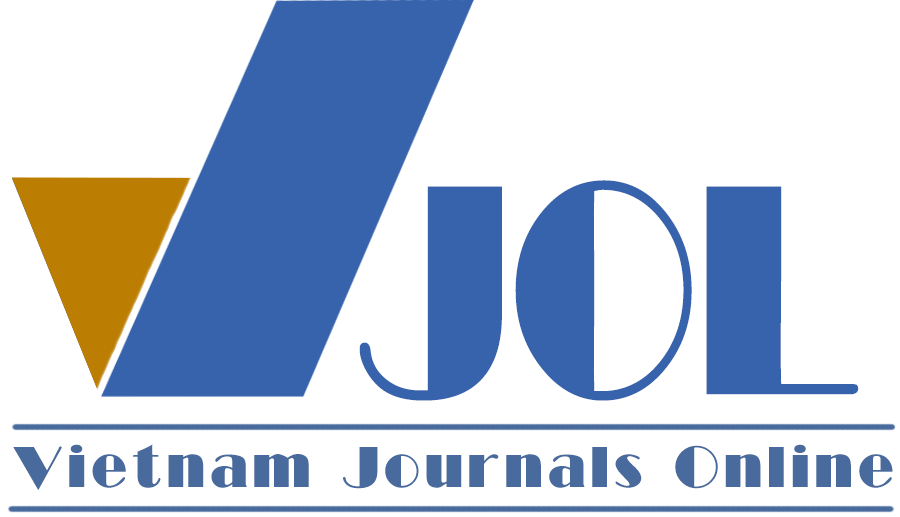Green human resource management: Proposed measurements for enterprises in Vietnam
Authors
DOI: https://doi.org/10.57110/jebvn.v3i3.183Keywords:
Green human resource management, environmental protection, measurement, Vietnamese enterprisesReferences
Ahmad, S. (2015). Green human resource management: Policies and practices. Cogent Business & Management, 2(1), 1-13. https://doi.org/10.1080/23311975.2015.1030817
Arulrajah, A. A., Opatha, H. H. D. N. P., & Nawaratne, N. N. J. (2015). Green human resource management practices: A review. Sri Lankan Journal of Human Resource Management, 5(1), 1-16. https://doi.org/10.4038/sljhrm.v5i1.5624
Bombiak, E., & Marciniuk-Kluska, A. (2018). Green human resource management as a tool for the sustainable development of enterprises: Polish young company experience. Sustainability, 10(6), 1739-1761. https://doi.org/10.3390/su10061739
Chaudhary, R. (2019). Green human resource management in Indian automobile industry. Journal of Global Responsibility, 10(2), 161-175. https://doi.org/10.1108/JGR-12-2018-0084
Daily, B. F., & Huang, S. (2001). Achieving sustainability through attention to human resource factors in environmental management. International Journal of Operations & Production Management, 21, 1539-1552. https://doi.org/10.1108/01443570110410892
Deepika, R., & Karpagam, V. (2016). A study on green HRM practices in an organisation. International Journal of Applied Research, 2(8), 426-429.
Deshwal, P. (2015). Green HRM: An organizational strategy of greening people. International Journal of Applied Research, 1(13), 176-181.
Haddock-Millar, J., Sanyal, C., & Müller-Camen, M. (2015). Green human resource management: a comparative qualitative case study of a United States multinational corporation. The International Journal of Human Resource Management, 27(2), 192–211. https://doi.org/10.1080/09585192.2015.1052087
Jabbour, C. J. C., Santos, F. C. A., & Nagano, M. S. (2010). Contributions of HRM throughout the stages of environmental management: Methodological triangulation applied to companies in Brazil. The International Journal of Human Resource Management, 21(7), 1049-1089. https://doi.org/10.1080/09585191003783512
Jackson, S. E., Renwick, D. W. S., Jabbour, C. J. C., & Müller-Camen, M. (2011). State-of-the-art and future directions for green human resource management: Introduction to the special issue. German Journal of Human Resource Management, 25(2), 99-116. https://doi.org/10.1177/239700221102500203
Jirawuttinunt, S., & Limsuwan, K. (2019). The effect of green human resource management on performance of certified ISO 14000 businesses in Thailand. UTCC International Journal of Business and Economics, 11(1), 168-185.
Hosain, M. S. (2016). Green human resource management: A theoretical overview. IOSR Journal of Business and Management, 18(6), 54-59.
Khurshid, R., & Darzi, M. A. (2016). Go green with green human resource management practices. International Journal of Research in Commerce & Management, 7(1), 19-21.
Mampra, M. (2013). Green HRM: Does it help to build a competitive service sector? A study. In Proceedings of the Tenth AIMS International Conference on Management (pp. 1273-1281).
Mandip, G. (2012). Green HRM: People management commitment to environmental sustainability. Research Journal of Recent Sciences, 1(ISC-2011), 244-252.
Nejati, M., Rabiei, S., & Jabbour, C. J. C. (2017). Envisioning the invisible: Understanding the synergy between green human resource management and green supply chain management in manufacturing firms in Iran in light of the moderating effect of employees’ resistance to change. Journal of Cleaner Production, 168, 163-172. https://doi.org/10.1016/j.jclepro.2017.08.213
Tuyet, N. (2016). 10 Companies causing the most serious pollution in Vietnam. Business Pulse. https://nhipsongdoanhnghiep.cuocsongantoan.vn/doanh-nghiep/diem-mat-10-cong-ty-gay-o-nhiem-nghiem-trong-nhat-o-viet-nam-1840491.html
Opatha, H. H. D. N. P., & Arulrajah, A. A. (2014). Green human resource management: simplified general reflections. International Business Research, 7(8), 101-112. https://doi.org/10.5539/ibr.v7n8p101
Nguyen, P. (2020). Fine of 1.3 billion dong for polluting enterprises. The People. https://nhandan.vn/phat-13-ty-dong-doanh-nghiep-xa-thai-gay-o-nhiem-post617250.html
Renwick, D. W. S., Redman, T., & Maguire, S. (2013). Green human resource management: A review and research agenda. International Journal of Management Reviews, 15(1), 1-14. https://doi.org/10.1111/j.1468-2370.2011.00328.x
Shen, J., Dumont, J., & Deng, X. (2019). Green human resource management in Chinese enterprises (1st ed.). Routledge. https://doi.org/10.4324/9780429286971
Tang, G., Chen, Y., Jiang, Y., Paillé, P., & Jia, J. (2018). Green human resource management practices: Scale development and validity. Asia Pacific Journal of Human Resources, 56(1), 31-55. https://doi.org/10.1111/1744-7941.12147
Tran, N. T. (2021). Some environmental problems in Vietnam today: Current status and solutions. Hanoi Law University. https://hdll.vn/vi/nghien-cuu---trao-doi/mot-so-van-de-ve-moi-truong-o-viet-nam-hien-nay--thuc-trang-va-giai-phap.html
Ullah, M. (2017). Integrating environmental sustainability into human resource management: A comprehensive review on green human resource management. Maghreb Review of Economics and Management, 4(1), 6-22.
Wehrmeyer, W. (Ed.). (1996). Greening people: Human resources and environmental management (1st ed.). Routledge. https://doi.org/10.4324/9781351283045
Downloads
Additional Files
Published
Abstract View
PDF Downloaded
How to Cite
Issue
Section
License
Copyright (c) 2023 Đặng Thị Hương

This work is licensed under a Creative Commons Attribution-NonCommercial 4.0 International License.
by VNU Journal of Economics and Business






